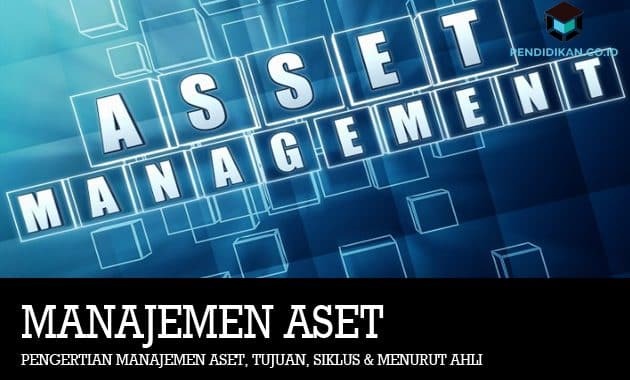Understanding Asset Management, Goals, Cycles & According to Experts
Education. Co. ID – This opportunity we will discuss about Asset Management, the full explanation will be described as follows:

Understanding Asset Management
Understanding asset management is a decision-making process and its implementation in accordance with the acquisition, use, and distribution of an asset.
Apart from that, there are also those who state that asset management is a systematic process that has the aim of being able to maintain, renew, and operate assets efficiently through acquisition, creation, operation, maintenance, rehabilitation, and disposal of assets so that objectives can be achieved effectively and efficient.
In other words, the point of asset management is an asset management related to technical, financial, and good management practices. Asset management is very necessary to be able to decide what is needed to achieve business goals, and thereafter to acquire and maintain assets over the life of the asset until the disposal.
Asset Management According to Experts
In order to better understand what asset management is, you can refer to several expert opinions, including the following:
1. According to Gima Sugiama (2013)
Asset management is a science and art to guide wealth management which includes a process of planning asset requirements, obtaining, inventory, legal audit, assessing, operating, maintaining, renewing or deleting, to transfer assets effectively and efficiently.
2. Dolly D. Siregar (2004)
Asset management is a profession or skill that is not yet fully developed or popular in the government environment or also in work units or agencies.
3. According to Kaganova and McKellar
Asset management is a decision-making process and its implementation in accordance with the acquisition, use, and distribution of these assets.
4. According to Danylo and Lamer (1999)
Asset management is a methodology for efficiently and fairly allocating resources among valid and competitive goals and objectives.
5. United States Department of Transportation
Asset management is a systematic process to maintain, update and operate cost-effectively physical assets.
Asset Management Goals
Basically, the purpose of asset management is to assist companies in making the right decisions so that assets can be managed effectively and efficiently. The objectives of asset management are as follows:
- To ensure the ownership status of an asset.
- To take an inventory of assets and assets owned.
- To keep the asset value high and have a long life.
- To minimize costs over the life of an asset.
- To ensure that the asset can/can generate maximum profit.
- To achieve optimal utilization and utilization of assets.
- For asset protection purposes.
- As a reference in preparing the balance sheet in accounting
Asset Management Cycle
In the implementation of asset management, there are 8 stages that must be carried out so that the cycle can be formed. Below are several stages of asset management, which are as follows:
1. Asset Requirements Planning
This is the initial stage of the asset management process where planning is carried out regarding what is needed in managing assets. For example, the need for procurement, inventory, maintenance, and so on.
2. Asset Procurement
At this stage, asset procurement activities/activities are carried out, for example goods or services obtained at their own expense or by other parties.
3. Asset Inventory
At this stage, there is a series of activities/activities in the form of identifying the quality and quantity of assets, both physically/non-physically or legally/legally. Each asset is documented and assigned a specific code for the purposes of managing the asset.
4. Legal Asset Audit
At this stage, an audit of asset status, procurement systems and procedures, systems and transfer flows is carried out. In addition, identification of possible legality problems is also carried out at this stage and at the same time preparing solutions.
5. Asset Operation and Maintenance
At this stage, each asset owned is used to perform tasks and work in accordance with its function to achieve company goals.
6. Asset Valuation
At this stage the asset management determines the value of the assets owned so that a the company clearly knows the value of the assets owned, transferred or also removed.
7. Asset Disposal
At this stage the company will assess what assets are considered unprofitable and will be written off. The process is divided into 2 (two) parts, namely:
Transfer of Assets, is the transfer of rights and/or responsibilities, authorities, and utilization of one work unit to another within its own environment. For example, capital participation, grants, and others.
Asset destruction, this is an act of destroying or destroying assets to reduce assets because they are considered unusable.
8. Asset Update
In many cases assets that are considered unproductive can be renewed so that they can be used again until their economic life ends. The renewal or rejuvenation is carried out in the form of repairs or replacement of spare parts so that the asset can/can work as it was in its original condition.
That's all and thank you for reading about Understanding Asset Management, Objectives, Cycles & According to Experts, hopefully what is described can be useful for you.
See AlsoUnderstanding Viruses, Characteristics, Structure, Role and Reproduction
See AlsoUnderstanding Steganography, History, Principles, Criteria, Aspects and Techniques
See AlsoUnderstanding Biosphere
